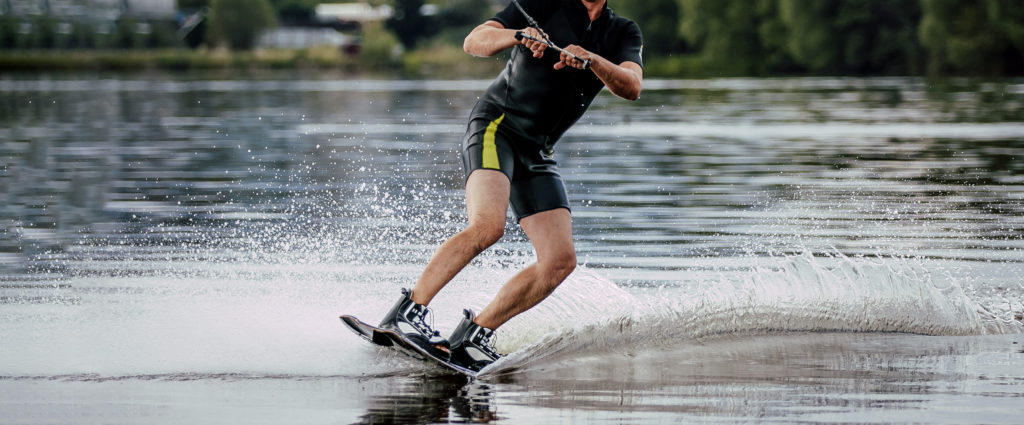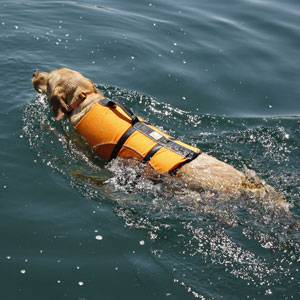
Nowadays, you can’t walk into a shop without being overwhelmed by a bunch of different wakeboards. There are small and narrow ones and some as wide as a boat. But, how do you choose the perfect one for you? How heavy should your wakeboard be? And does length and weight affect your overall performance? Enter, the Ultimate Wakeboard Size Chart Guide!
The truth is, looking for a wakeboard isn’t a daunting task once you know the criteria to look for. So keep on reading, because we’re going to tell you all the important factors you need to know to get maximum stability, maneuverability, and fun out of your next (or first) wakeboard.
How to Find Your Wakeboard Size
First things first, the size of a wakeboard influences a rider’s stability, control, and balance. Of these advantages, the most important is the control you have over the water. So, when deciding on a wakeboard size to ride behind a boat, your choice mainly comes down to two things: your weight and your riding style.
It’s important to choose the right board length based on your weight. Tailoring your board to your dimensions will give you the right amount of stability, control, and balance in the water.
The most common reference in finding the right wakeboard is the manufacturer’s specifications guide. These are often posted on websites or printed on product labels, which will be very helpful when deciding on your wakeboard. You should go with the recommended wakeboard size specified on the size chart below to give you more surface area and float:
| Rider Weight (lbs) | Wakeboard Length (cm) |
| < 100 | < 130 |
| 90-150 | 130-134 |
| 130-180 | 135-139 |
| 170-250 | 140-144 |
| 200-275+ | > 144 |
Unlike your weight, height doesn’t play as big a role in your wakeboarding experience.
The next consideration is riding style. Wakeboards come in single-tip and twin-tip models. Single-tip boards have a tapered front and a squared rear, which means they can only be ridden in one direction. With twin-tips, the rider can switch the orientation of the board and more easily do tricks.
Some people prefer to ride a shorter wakeboard, and some prefer to ride a longer wakeboard. Remember, the size of the board determines how well and how fast you learn tricks, get up, and maintain your balance.
Larger boards are easier to get up and stay on, as they are more ‘floaty’. These boards are great for beginners who are still learning the mechanics of wakeboarding and want to spend more time above the water than under it. However, they are heavier and harder to maneuver in the water.
Smaller boards are generally suitable for more advanced riders as they are better for tricks. However, they are less stable, so it will take a bit of practice to land tricks at the beginning compared to a bigger board.
Did you know that from 2000 to 2007, there was an increase in wakeboard injuries, mostly to the head and neck? So, whether you opt for a small or a large board, it is worth mentioning to always keep safety in mind at every stage of your wakeboarding journey. The best way to avoid those potentially dangerous situations is by wearing a life jacket that will keep you protected. For wakeboarding, in particular, you will want a Type III or Type V vest.
What Should Determine the Size of Your Wakeboard?
Besides your weight and your riding style, there are other factors that are going to determine the size of your wakeboard.
- Skill level – Your ideal wakeboard size can also depend on your level of skill and experience. A longer board is generally the best choice for a beginner since it’s easier to learn to ride, perform tricks, and they provide you with more stability. Standing up on a wakeboard is the first big hurdle to overcome, and it is much easier to do when you have a longer board. For more intermediate and advanced wakeboarders, a shorter board may be the way to go. This is because you can have easier spins on the water and move quickly through the air.
- Stability – When you’re a beginner, staying stable can be very challenging. Even if you’re not a beginner, the size and shape of your board will significantly impact how steady you feel on the waves. Keep in mind that the size of the wakeboard can determine how stable you feel in the water. For this particular sport, a longer board can be helpful because of its larger surface area. This increased stability allows you to glide faster across the water without losing your balance.
- Tricks – Another important factor to consider when choosing the size of your wakeboard is your desire to perform tricks. If you want to flip around and spin in the air with ease, a shorter board is the right for you. While it is generally easier to learn tricks on a longer board, a shorter wakeboard provides lightness and maneuverability, making tricks much more effortless.
What is the downside of having a disproportionate wakeboard?
As with any sport, your equipment matters, and it needs to match your body and your goals. An inappropriate wakeboard will limit the tricks you can perform on the water. If your wakeboard is too big, it will be too hard for you to maneuver on the waves correctly. A wakeboard that’s too small will give you little to no stability and have you sinking beneath the surface of the water before you gain any speed. Furthermore, an inappropriately sized board can make it challenging for you to stand. If the wakeboard is not long enough, you won’t be able to float efficiently.
Hit the Waters!
When you look at the size chart of a board, you usually have a wide spectrum of sizes you can choose from. And now that you’ve mastered all the tips we’ve shared on wakeboard sizing, you can plan your next wakeboarding experience without surprises. Remember: have fun in the process!


